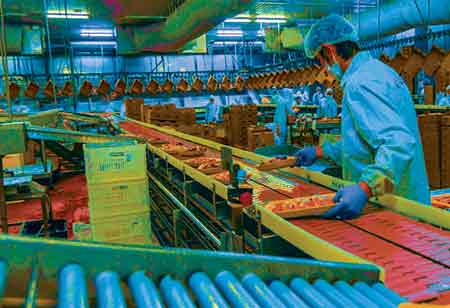Thank you for Subscribing to Food Business Review Weekly Brief
- Home
- Topics
- Alternative Proteins and Plant Based Food
- Beer and Wine
- Canned Beverages
- Coffee And Tea
- Food and Beverage Consulting
- Food and Beverage Financial Service
- Food And Beverages Marketing
- Food Distributors
- Food Ingredients
- Food Sustainability
- Plant Based Food and Beverages
- Seafood Suppliers
- Supplement Manufacturing
- Wine Investment
- News
- Vendor Viewpoint
- CXO Insights
- Conferences
- Newsletter
- CXO Awards
-
Ways Cutting-Edge Technologies are Advancing Food Safety Testing
Food safety testing uses various technologies and procedures to identify risk factors related to consuming a food item.

By
Food Business Review | Tuesday, February 01, 2022
Stay ahead of the industry with exclusive feature stories on the top companies, expert insights and the latest news delivered straight to your inbox. Subscribe today.

Food testing services are now more necessary than ever because of the rising risk of foodborne illnesses, adulteration, and toxicity.
FREMONT, CA: Food safety testing uses various technologies and procedures to identify risk factors related to consuming a food item. To evaluate and verify that food products adhere to its food safety standards and protect public health, specific agencies set up by a country's government frequently conduct food safety testing. Food products can get contaminated at almost any step in the production and distribution cycle due to an increasing reliance on global supply chains, bringing increased health hazards to consumers. National regulators from all over the world, as well as essential players in the food business, are being prompted by these and other considerations to call for improved and more efficient monitoring of the safety of food items and enhanced testing to lower consumer health risks.
Driven by consumers' growing interest in food safety
Food testing services are now more necessary than ever because of the rising risk of foodborne illnesses, adulteration, and toxicity. These elements emphasize the requirement for more attention and the construction of additional food-safety facilities. Growing consumer interest in the quality of food and technology improvements is driving the market for food testing services in industrialized nations. Through safety certifications and compliance, food processing businesses and foodservice organizations win over customers' trust.
Modern techniques for detecting chemicals and microorganisms
Food manufacturers have access to various testing techniques to evaluate the safety of their goods. Different analytical techniques are frequently employed for chemical testing. These include conventional methods such as cutting-edge techniques like infrared spectroscopy, gas and liquid chromatography, and mass spectrometry. Mass spectrometry is the most prevalent chemical test when combined with liquid or gas chromatography because it enables the detection of tiny amounts of analyses in extremely complex food matrices. Traditional methods for assessing food microbiology typically use culture-based procedures using selective agars or other biochemical assay procedures.
Modernization of chemical testing techniques
The quantity and variety of current chemical and microbiological procedures suitable for food safety testing continue to grow as scientists and researchers discover more effective and time-saving techniques and technologies. The speed, sensitivity, and selectivity of novel testing devices that allow several compounds to be examined in a single test run are advancing chemical pollutants analysis. Because of these benefits, it has become the go-to sample preparation method for the chemical evaluation of pesticide residues in fruits and vegetables. It makes preparations simpler to automate.






